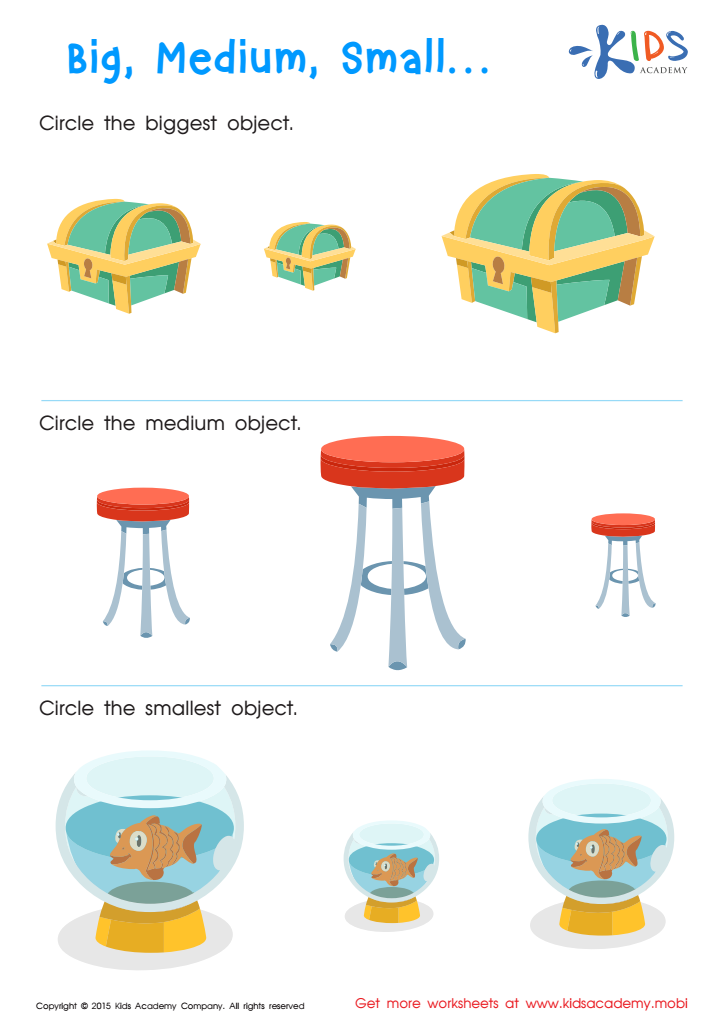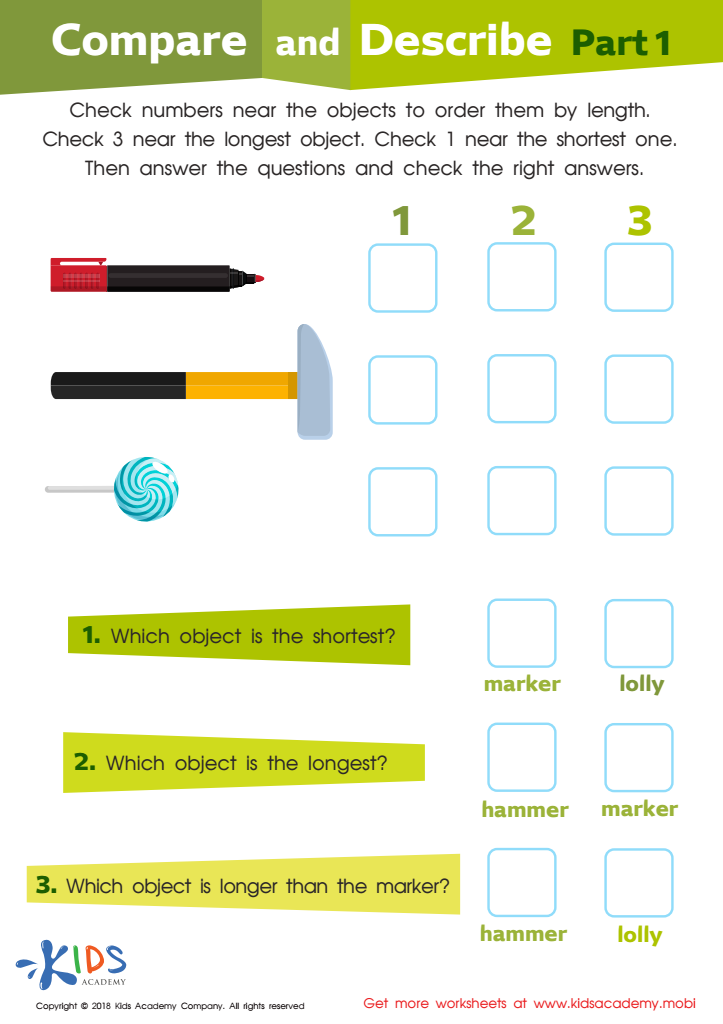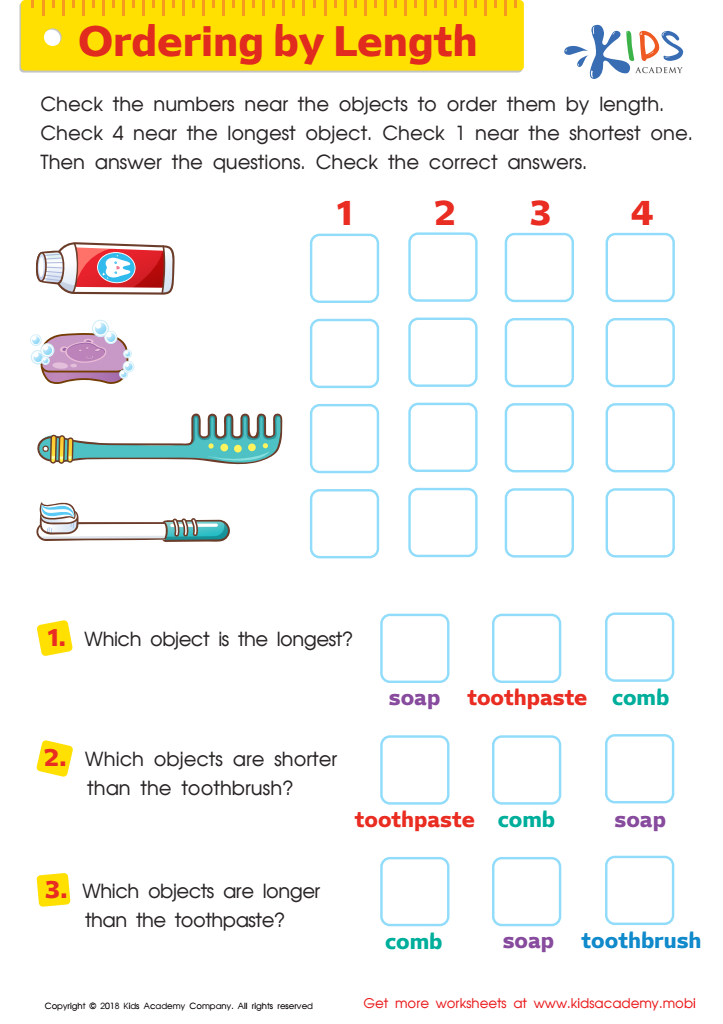Visual perception Measurement Worksheets for Ages 3-6
3 filtered results
-
From - To
Enhance your child’s visual perception skills with our engaging Visual Perception Measurement Worksheets designed for ages 3-6. These worksheets are crafted to help young learners recognize shapes, sizes, and patterns, essential for their cognitive development. Each printable activity is fun and interactive, promoting hands-on learning in a playful way. Perfect for home or classroom use, these resources support children in identifying visual differences and similarities, boosting their attention to detail. Foster critical thinking and foundational math skills early on with our thoughtfully designed worksheets that adapt to various learning styles. Start your child’s journey towards visual proficiency today!


Big Medium Small Worksheet


Compare and Describe: Part 1 Worksheet


Ordering by Length Worksheet
Visual perception is a critical cognitive skill that allows children to interpret and understand visual information from their surroundings. For ages 3-6, visual perception measurement is vital as it helps identify a child's ability to recognize shapes, colors, spatial relationships, and patterns. These skills are foundational for later learning, including reading, writing, and mathematical concepts.
Parents and teachers should care about visual perception measurement because early identification and intervention can prevent future learning challenges. If a child struggles with visual perception tasks, it might indicate potential issues with broader cognitive processing or learning disabilities. By measuring these skills at an early age, educators and parents can devise targeted strategies to support the child’s development effectively.
Moreover, visual perception is closely linked with fine motor skills, which are essential for tasks such as holding a pencil or using scissors. Developing these skills promotes confidence and independence in young learners. For parents and teachers, understanding a child's visual perception capability is key to providing tailored activities that engage and challenge children appropriately. This proactive approach fosters a positive learning environment, leading to better outcomes in academic and social settings. Ultimately, supporting visual perception in early childhood lays the framework for a child's successful educational journey.
 Assign to My Students
Assign to My Students





















